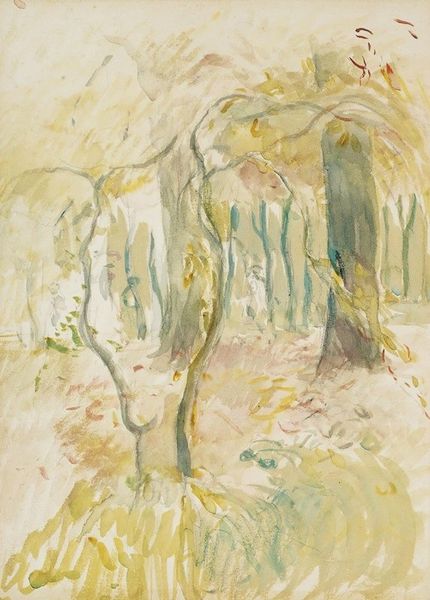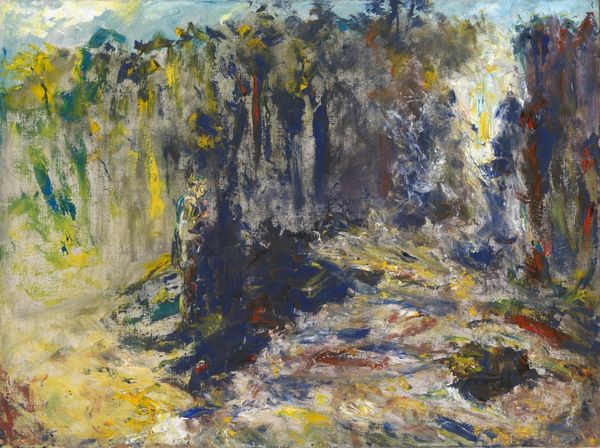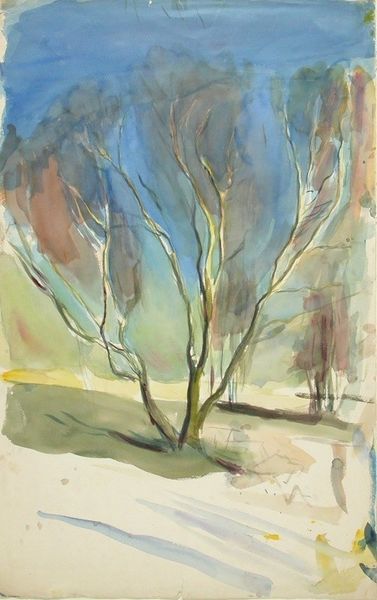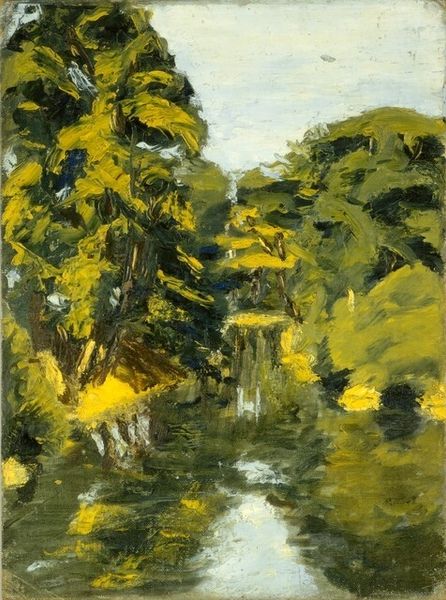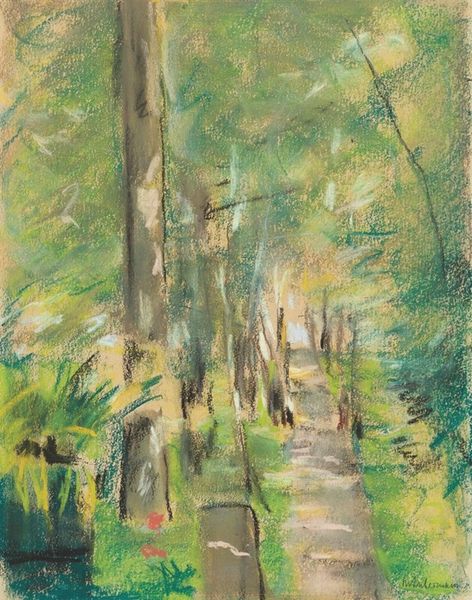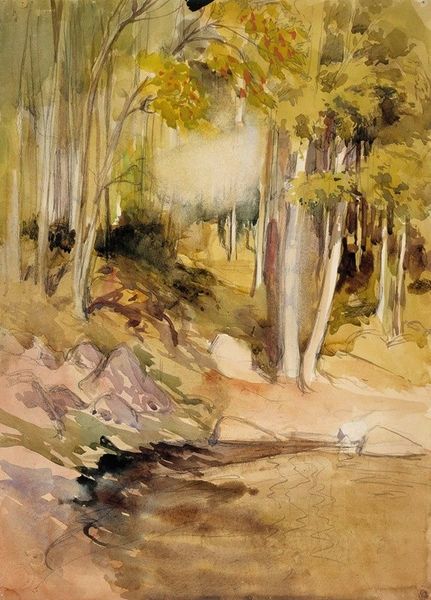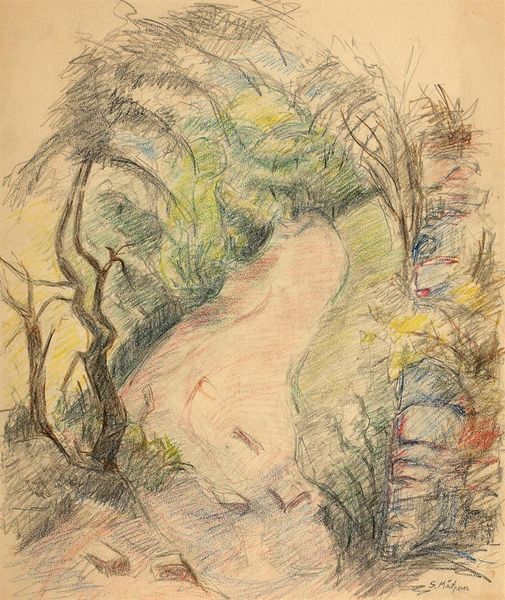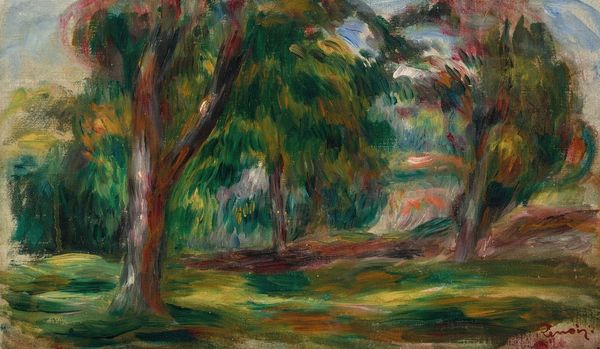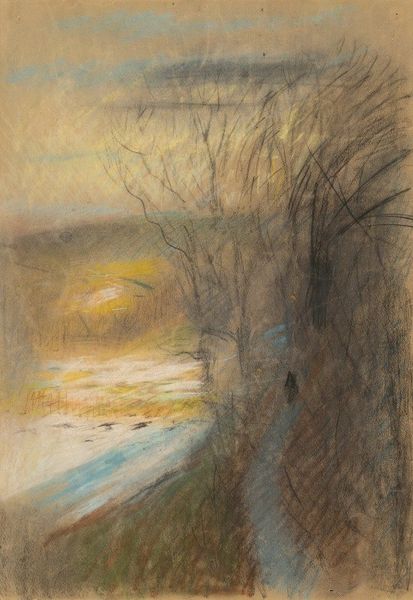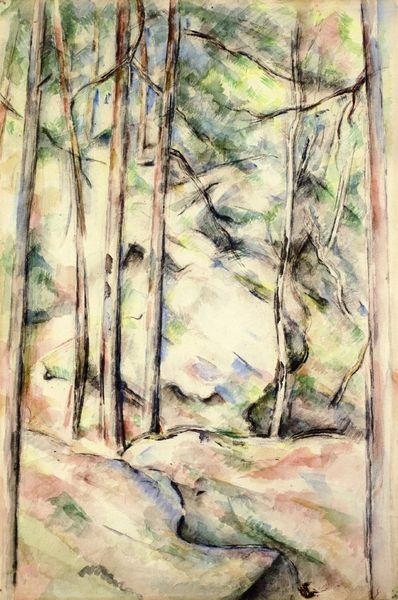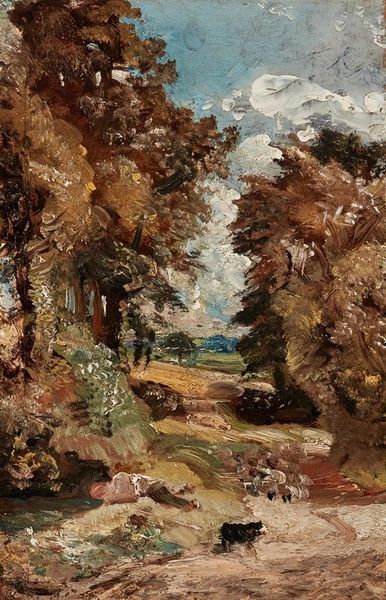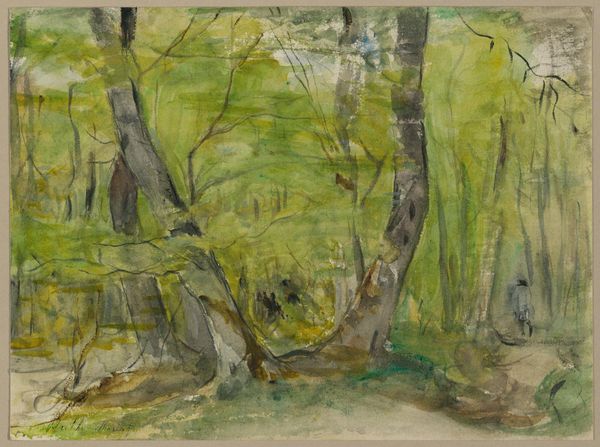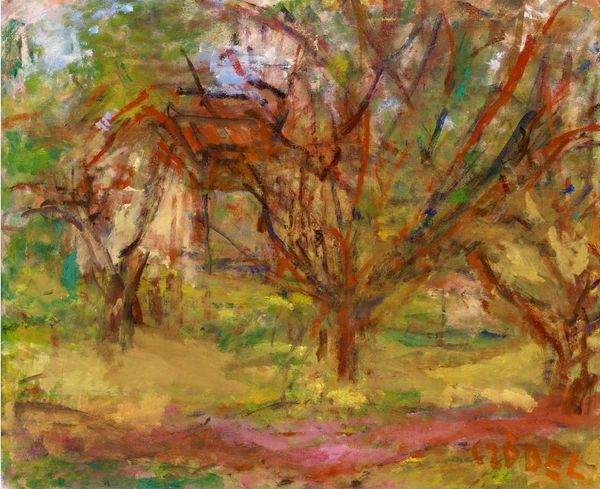
painting, plein-air, watercolor, impasto
#
painting
#
plein-air
#
landscape
#
impressionist landscape
#
oil painting
#
watercolor
#
impasto
#
line
#
post-impressionism
#
watercolor
#
realism
Copyright: Public Domain: Artvee
Curator: Welcome. Here we have "Metsänsisusta," a landscape executed with both watercolor and what appears to be an impasto oil paint technique. Editor: My immediate impression is one of tranquility, but also slight disorientation. The palette feels muted, and there’s a blurring of edges, creating a somewhat dreamlike forest scene. Curator: Indeed. What I find captivating is Edelfelt's deft manipulation of line. Note how it defines the upward reach of the trees and also seems to contain their mass at the same time. The contrast between the dark strokes that add depth to the composition and lighter marks for texture contributes greatly to a subtle yet dynamic pictorial surface. Editor: And what a seemingly idyllic representation, isn't it? Though given that Edelfelt painted during a period of intense Finnish nationalism and Russian oppression, one must ask whose idyllic experience it captures. The scene's stillness belies the turmoil occurring at that very time. Curator: An interesting reading. One could say, however, that stillness allows for an almost archetypal rendition of nature. This lends universality to the aesthetic sentiment and makes the composition more durable. Editor: Perhaps. I see it as deeply political in that it posits a natural ideal to a people experiencing unnatural social restrictions. I imagine many contemporary viewers would connect with this depiction as both a source of nationalist identity, but also an ideal. Curator: It certainly demonstrates how subjective perceptions influence objective forms, particularly since we do not know its true date. It also serves as a beautiful example of a plein-air painting, a type so very popular for many artists in the period. Editor: Absolutely. The way we frame this picture now continues this cycle of ideological production—let us not lose sight of it. Curator: Thank you for highlighting this. It's been insightful to explore how this forest scene’s compositional strength allows for divergent historical readings. Editor: My pleasure. Hopefully this gives everyone a chance to think critically about our visual inheritance.
Comments
No comments
Be the first to comment and join the conversation on the ultimate creative platform.
